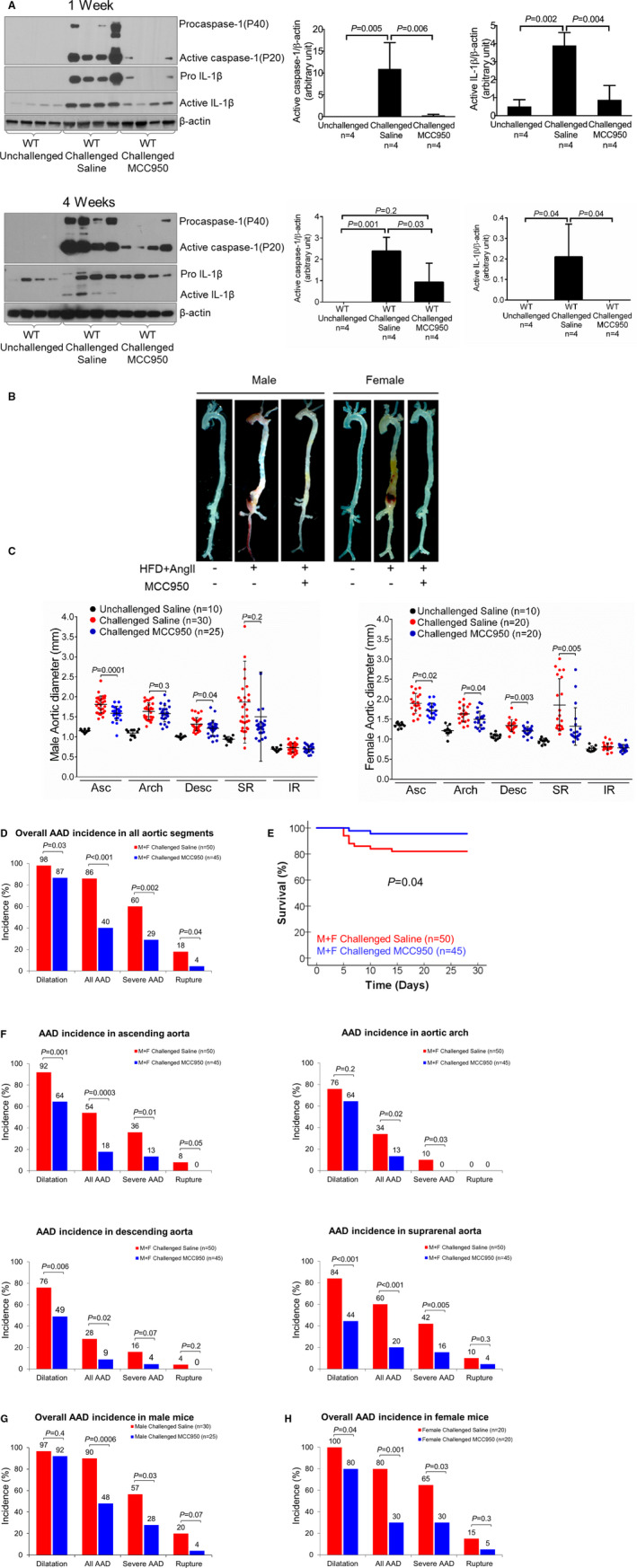Figure 1.

Attenuation of challenge‐induced aortic degeneration and aneurysm and dissection (AAD) development in wild‐type (WT) mice treated with the nucleotide‐binding oligomerization domain–like receptor pyrin domain containing 3 (NLRP3) inflammasome inhibitor MCC950. A, Representative Western blot images and quantification of protein lysates of ascending aortas after 1 week and after 4 weeks of angiotensin II (AngII) infusion during the aortic challenge period, showing lower levels of procaspase‐1, active caspase‐1, pro–interleukin (IL)‐1β, and active IL‐1β in aortic tissues from challenged WT MCC950‐treated mice than in those from challenged WT mice treated with vehicle. B, Excised aortas showing that treatment with MCC950 attenuated challenged‐induced AAD formation in WT mice. C, Aortic diameters in several segments in male and female challenged WT mice were reduced with MCC950 treatment. D, The overall incidence of AAD in challenged male and female WT mice was reduced with MCC950 treatment. E, Kaplan–Meier survival curve analysis showing that survival was increased at 28 days in challenged male and female WT mice that received MCC950 compared with those that received vehicle. F, In male and female challenged WT mice, the incidence of AAD in different aortic segments was significantly lower when mice were treated with MCC950 than when mice were treated with vehicle. G and H, The overall incidence of challenge‐induced AAD in male and female mice treated with MCC950 was similar. Data are presented as mean±SEM. One‐way ANOVA with the post hoc Dunnett T3 test was used for pairwise comparisons in (A and C). The Fisher exact test was used for (D through H). Kaplan–Meier survival curves in (E) were compared using the log‐rank (Mantel‐Cox) test. Asc indicates ascending; Desc, descending thoracic; F, female; HFD, high‐cholesterol, high‐fat diet; IR, infrarenal; M, male; SR, suprarenal abdominal.
